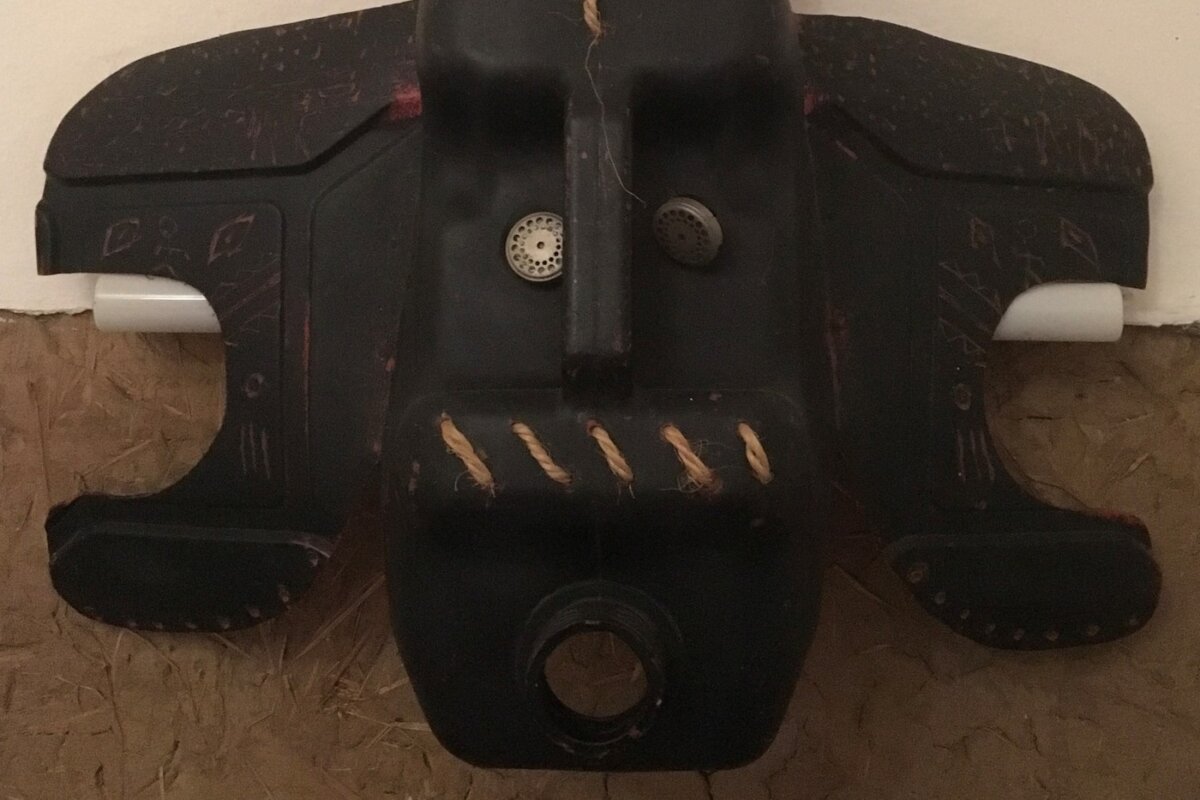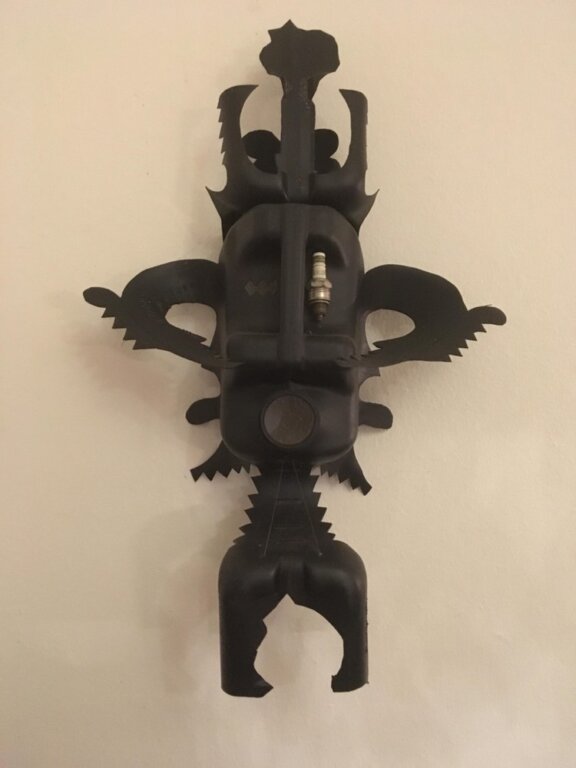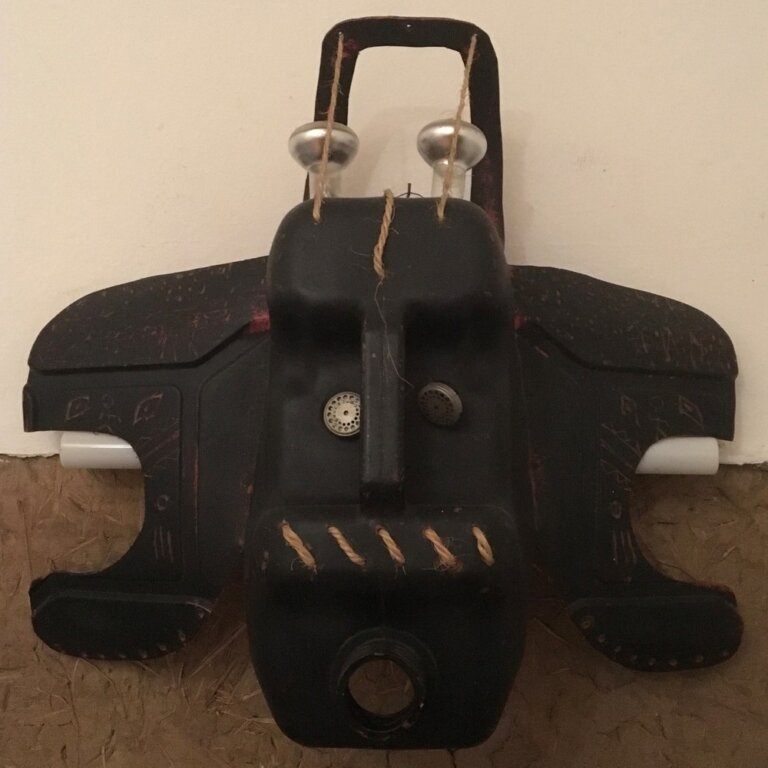The Humboldt Lab is exhibiting two works by the Beninese artist Romuald Hazoumè, who makes masks out of old plastic canisters – canisters But a that are used in his country to smuggle petrol in perilous conditions.
At a fleeting glance the colour of the masks recalls dark, noble wood. A second glance is irritating. One mask has light bulbs as horns on its head. The mouths are round holes that make them look like choirboys. The other has protruding, jagged ears and a spark plug in its left eye.
The details that Romuald Hazoumè adds disturb the initial impression of traditional African art – and refer to the material with which the artist works. The two masks that will be on show in the Humboldt Lab are made out of petrol canisters.
The artist from Benin in West Africa refers in his works made of junk to traditional African forms of artistic expression – while poking fun at Western expectations. “He once said, ‘You expect us to make masks. So I make masks,” says Dr Friedrich von Bose, Deputy Head Curator of the Humboldt Lab, the Humboldt-Universität’s exhibition in the Humboldt Forum.


